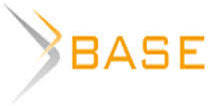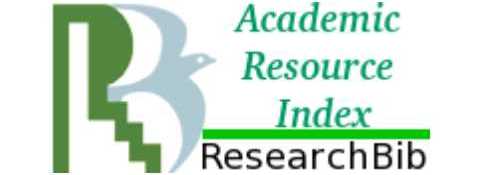A model of segmentation of restaurant customers in the digital economy
In the conditions of digital transformation of the catering market, restaurants need to know the typical behavioural patterns of consumers of restaurant services in order to choose the most promising target audience and build the right strategy of interaction with it. The goal of the present paper is to introduce a taxonomy of models of restaurant customers’ behavior. The taxonomy is based on the Weber’s method of ideal types. This study proposes a classification of these models according to the criteria of customer's willingness to visit a restaurant, willingness to spend time in a restaurant and willingness to order food in a restaurant. According to these criteria, the potential customer audience is divided into eight ideal types, each of which is characterised by its own model of interaction with the restaurant. A detailed description is given for each type and general recommendations for managing the restaurant's relationship with customers of different types are formulated. A review of the problems associated with building interaction between catering businesses and customers in the digital transformation of the market is given, and the need to solve these problems is noted. A promising direction for further research is the cluster analysis of the client audience on the basis of the proposed classification of consumer behaviour models.
Kotliarov, I. D. (2023), “A model of segmentation of restaurant customers in the digital economy”, Research Result. Business and Service Technologies, 9 (3), pp. 38-52, DOI: 10.18413/2408-9346-2023-9-3-0-3
















While nobody left any comments to this publication.
You can be first.
Aizinova, I. M. (2018), “Restaurant and catering industry in the Russian Federation: industrial and social aspects”, Nauchnye trudy: Institut narodnokhozjajstvennogo prognozirovanija RAN, 16, pp. 267-291, DOI 10.29003/m265.sp_ief_ras2018/267-291.
Apatova, N. V. (2022), “Digital transformations of business and sotsium”, Vestnik Tverskogo gosudarstvennogo universiteta. Serija: Ekonomika i upravlenie, 4 (60), pp. 60-71, DOI 10.26456/2219-1453/2022.4.060-071.
Bakharev, V. V., Mityashin, G. Yu. and Chargazija, G. G. (2023), “Strategies of digitalization of true cost restaurants”, Research result. Business and Service Technologies, 9 (2), pp. 104-121, DOI: 10.18413/2408-9346-2023-9-2-0-9.
Egorova, K. D., Platonova, A. S. and Suvorova, S. D. (2020), ““Dark store” format: the modern reality of retail in Russia”, International journal of natural sciences and humaties, 7-2(46), pp. 110-113, DOI 10.24411/2500-1000-2020-10896.
Eremin, K. A. and Suvorova, S. D. (2020), “"E-grocery" and "dark store" formats: development in the Russian consumer market”, Ekonomika i biznes: teoriya i praktika, 12-1 (70), pp. 235-238, DOI 10.24411/2411-0450-2020-11055.
Fedorova, E. A. and Khrustova, L. E. (2022), “Restaurant business in the context of experience economy: an approach towards interpretation of customers’ reviews”, Finansy i kredit, 28(11), pp. 2422-2443, DOI 10.24891/fc.28.11.2422.
Yushkova, A. I. (2010). “Promotion of restaurant product: a hotel restaurant”, RISK: Resursy, Informatsija, Snabzhenie, Konkurentsiya, 2, 313-315.
Kotler, Ph., Armstrong, G., Wong and V., Saunders, J. (2016), Osnovy marketinga [Principles of Marketing], Williams, St. Petersburg, Russia.
Kurochkina A. A., Lukina O. V., Mityashin G. Yu. (2023), “Separate pricing strategy as a tool to ensure enterprise competitiveness in the service sector”, Economics and Management, 29 (3), pp. 297-307. DOI 10.35854/1998-1627-2023-3-297-307.
Lychakova, A. D. (2022), “Dark kitchen and traditional model of organization of restaurant business: a comparative analysis”, Molodezhnaya nedelya nauki IPMEHIT, Saint-Petersburg, 2022, pp. 76-79.
Mityashin, G. YU. (2021), “The “true cost” model is an alternative approach to monetization of restaurant services”, Molodezhnaya nedelya nauki IPMEHIT, Saint-Petersburg, Russia, 02-04 of December, 2021, pp. 136-139.
Petrenko, E. S. (2009), “Traditional feast. Experience economy will relieve restaurants from crisis”, Creative economy, 3 (27), pp. 132-138.
Pleshhenko, V. I. (2021 a), “The coronavirus pandemic as a catalyst for the development of the courier delivery market”, Logistika segodnya, 3, pp. 194-199.
Polynskaja, G. A. (2020 b), “Impact of space factors on the satisfaction of restaurants’ customers”, Vestnik Moskovskogo universiteta. Serija 6, Ekonomika, 1, pp. 156-180.
Polynskaja, G. A. (2020 v), “Classification of customers of traditional restaurants on the basis of the level of satisfaction: the impact of cognitive and emotional components”, Marketing and marketing research, 3, pp. 218-229.
Polynskaja, G. A. (2020), “Identifying factors influencing satisfaction with catering businesses to develop a value proposition // Marketing and marketing research.”, Marketing and marketing research, 4, pp. 302-318.
Polynskaja, G. A. and Gordeikhina I. I. (2019), “Identification of factors influencing in the satisfaction of restaurants’ customers”, Marketing and marketing research, 2, pp. 146-157.
Rostislavleva, N. V. (2015), “Max Weber's concept of "ideal types" as a multidisciplinary project”, Vestnik RGGU. Serija: Istorija, Filologija. Kulturologija. Vostokovednie, 9 (9), pp. 122-129.
Sukhina, K. P., Kirillova, T. V. (2021), “Integrators and aggregators of delivery services”, Instituty i mekhanizmy innovatsionnogo razvitija: mirovoj opyt i rossijskaja praktika, Kursk, pp. 192-196.
Suvorova, S. D. and Kulikova, O. M. (2022), “Digital transformation of business”, Innovatsionnaya ehkonomika: perspektivy razvitiya i sovershenstvovaniya, 2 (60), pp. 54-59, DOI 10.47581/2022/IE.2.60.10.
Piton Hakim, M., Methner Dela Libera, V., D'Avoglio Zanetta, L., Guimarães Perdomo Nascimento, L. and Thimoteo da Cunha, D. (2022), “What is a dark kitchen? A study of consumer's perceptions of deliver-only restaurants using food delivery apps in Brazil”, Food Research International, 161, pp. 111768, DOI: https://doi.org/10.1016/j.foodres.2022.111768
Voronova, O. V., Medvedeva, D. (2020), “Main trends of development of the chain sector of the fast-food restaurant industry in the present situation”, Fundamentalnye i prikladnye issledovanija v oblasti upravlenija, ekonomiki i torgovli, St. Petersburg, pp. 214-220.
Vu, O. T. K., Duarte Alonso, A., Tran, T. D. and Nicholson G. J. (2023), “Illuminating the dark kitchen business model - A knowledge-based perspective from the supply-side”, Journal of Hospitality and Tourism Management, 55, pp. 318-331, DOI: https://doi.org/10.1016/j.jhtm.2023.04.013.